Orange-Spearmint Cold Process Goat Milk Soap Recipe
This orange-spearmint cold process goat milk soap recipe is a mouthful, but it’s also the most divine-smelling soap you can make. It’s silky-soft and perfect for spring!
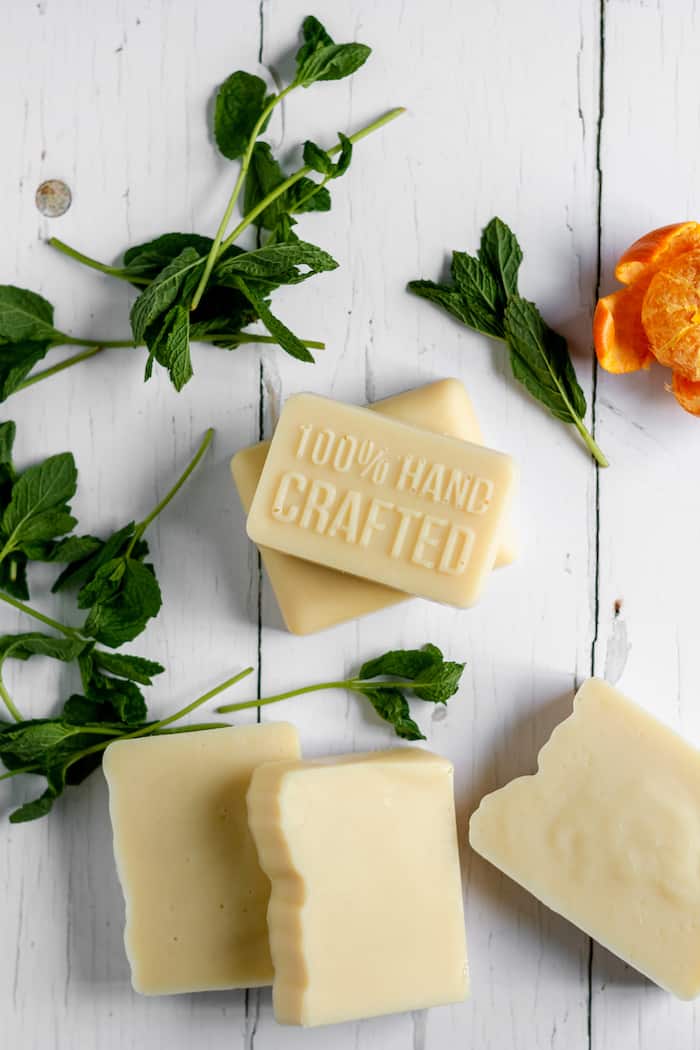
I love the light, minty-orange scent of this soap. It’s perfect for spring. Whereas I feel like the rosemary peppermint-scented soap is more bold and appropriate for summer.
I think I may even like it better than simple lavender soap or my beloved lemongrass goat milk soap.
One of my favorite parts of homemaking over the last 12 years or so has been homemade goat milk soap.
There was a time when the kids were little that I made it in large batches in order to stretch out the time between making a new batch of soap. But for the most part, I like to make small batches and make them more frequently so I can have more scent combos on hand to switch it up and make life interesting.
I don’t think I’ll ever get tired of making new soap scents.
That’s not to say that unscented soap doesn’t have its place. You can make simple soap with no essential oils, or for instance, the point of coffee scrub soap is the coffee, and exfoliating properties, so it’s unscented as well.
But soap that smells good is one of those little things in life that bring me joy.
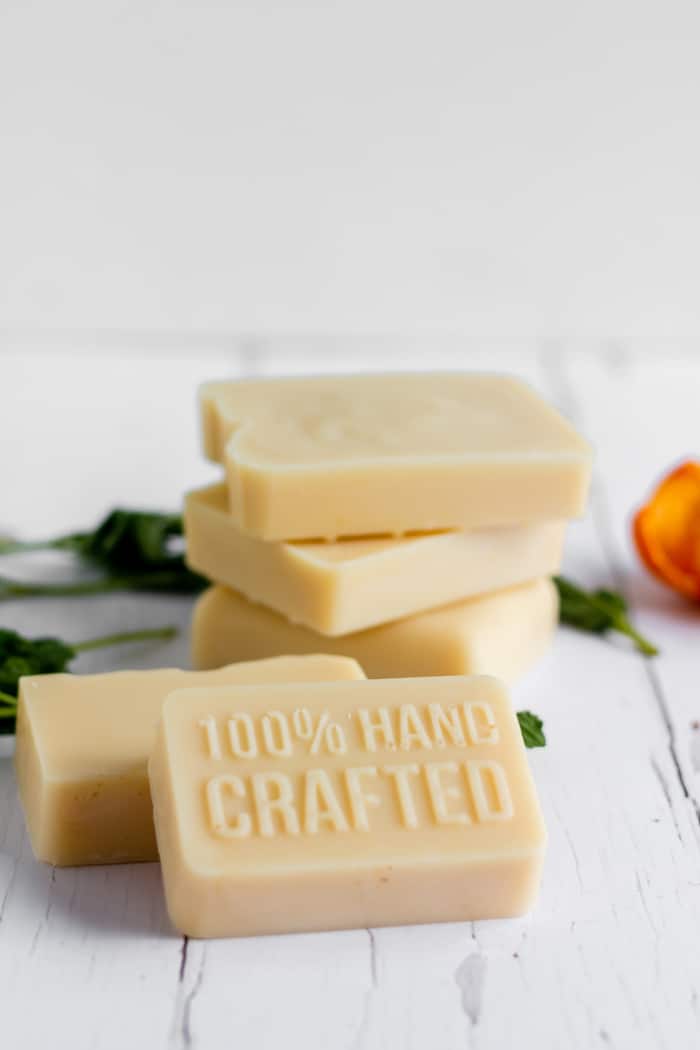
How to Choose the Right Soap Scents for the Season
I make Christmas-themed soap in the winter and fall spice soap in the fall.
And I make orange spearmint cold process goat milk soap this spring.
- Orange and spearmint because the scents are soft and subtle but also bright and clean, which reminds me of spring.
- Cold process method because it’s less work upfront. The trade-off is you need to let it cure for three weeks. Which is usually worth it to me. However, if I need soap the same day (or week), I sometimes make hot process soap in my crockpot.
- Goat milk, because the alpha-hydroxy acids help remove dead skin cells from your skin, it’s high in vitamin A, which is important for repairing damaged tissue and maintaining healthy skin, and is high in selenium which scientists believe to have an important role in preventing sun damage and skin cancer.
Where to Buy Ingredients for Homemade Cold Processed Goat Milk Soap
If you’ve never made soap before, you may be surprised that making an Orange-Spearmint Cold Process Goat Milk Soap Recipe is as easy as a simple Amazon order or a trip to Hobby Lobby.
- You can get goat milk at most grocery stores – either refrigerated by the quart or in the baking aisle, either canned or dehydrated.
- I typically order lye, also known as sodium hydroxide, from Amazon.com. there are many online soap suppliers, but I don’t buy a ton of lye, so it’s simpler to use Amazon.
- Fats. You don’t have to order special fats for soap making. But keep in mind that while you may want extra virgin everything for internal consumption, the same is not true for soap making. You’ll actually have better results with refined coconut oil, and pomace olive oil, if you have it, will make a harder bar than virgin olive oil. You can also use “junk oils” such as corn, soy, or canola in soap making, keeping in mind that the saponification process changes the nature of the oil, and what you would normally consider inferior for consuming internally can actually be ideal for the purpose of soap making.
- Scents. I’m not a fan of “scent oils”. “Scents” are what make some people hate perfumes and scented products. I have family members who get migraines from scented bath products. They also have a tendency to seize your soap mixture, sometimes so quickly you can’t get it into the models before it hardens. I exclusively use essential oils to scent my soap. And I’m not dogmatic about the brand. Typically, I use the Now brand, which is some of the best inexpensive oils you can get, or Young Living.
- Soap Molds. You can use anything non-corrosive to mold your soap. Something like a cleaned-out milk carton can be used similarly to a loaf mold, though you may want to invest in an actual loaf mold if you decide to start making soap regularly. For the mold I have, I usually double the recipe below to fill it completely. You can also get silicone pocket molds to make prettier bars or even plastic molds at Hobby Lobby or Walmart. The soap in the photos you see on this page was molded in molds I grabbed from the clearance rack at Walmart a year or two ago.
- Add-ins and botanicals. You can add dried herbs to your mixture. For instance, dried, pulverized orange peel would be an appropriate addition to this particular recipe. Adding a layer of tapioca pearls to the bottom of your soap mold makes a great massage bar, or coarse cornmeal can make a great exfoliating bar. Poppyseed, such as in this lemon-poppyseed soap, is also a great exfoliant. In my oatmeal lavender bar, I use quick oats, pulsing them in the blender a bit, rather than shelling out extra money for colloidal oats – which is exactly the same thing.
- Thermometer. I like to use an instant infrared thermometer, but a candy thermometer will work as well.
Keep in mind that lye is caustic. It should be kept out of reach of children at all times, you should only use it in a well-ventilated area, and you should always wear gloves and safety glasses when using it.
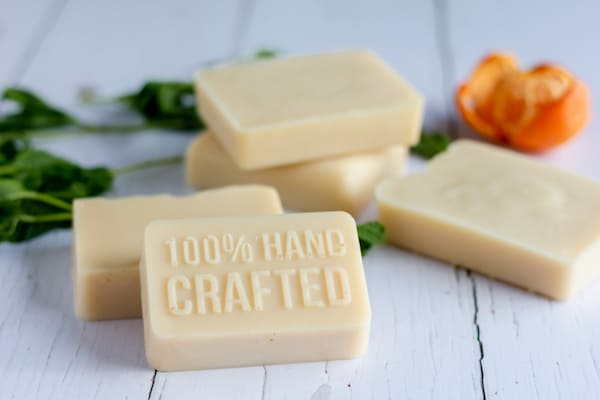
Orange-Spearmint Cold Process Goat Milk Soap Recipe
Ingredients:
- 2 oz. lye
- 6 oz. ice cold goat milk
- 8 oz. coconut oil
- 8 oz. olive oil
- 2 teaspoons orange essential oil
- 2 teaspoons spearmint essential oil
Instructions:
- Measure out your ingredients carefully. I highly recommend not opening your lye until you’re ready to measure, and immediately mix it in with your goat milk – especially if you live in a humid area where your lye will absorb moisture and stick to or lump up in your measuring device.
- In a well-ventilated place – preferably outside, pour icy goat milk into a large, non-reactive bowl – either glass or high-quality stainless steel.
- Sprinkle lye granules on top of milk, and stir with a non-reactive spoon or spatula until lye is dissolved.
- Let the mixture sit and cool until it reaches about 100 degrees.
- In the meantime, melt the oil and cool to 100 degrees.
- When the temperatures match, gently pour the milk/lye mixture into the oil mixture
- Mix with an immersion blender for 5-15 minutes until your soap mixture reaches a trace. If you’re not sure what a trace is, read this article with descriptive pictures.
- Stir in essential oil and mix well.
- Pour the soap mixture into a prepared mold.
- Carefully move your full mold to a place where it can sit undisturbed for at least 24 hours.
- Cover with a cardboard or plastic box, and then with a towel or blanket to insulate.
- After 24-48 hours, you can remove your soap from the molds.
- Place soap back in a place where it won’t be disturbed, and let cure for at least three weeks before using to complete the saponification process, sweat, and become harder.
Get Your Garden Cheat Sheets!

Want to know exactly when, where, and how to plant your vegetables? Sign up to get our FREE companion planting guide, and garden planting cheat sheet printable.
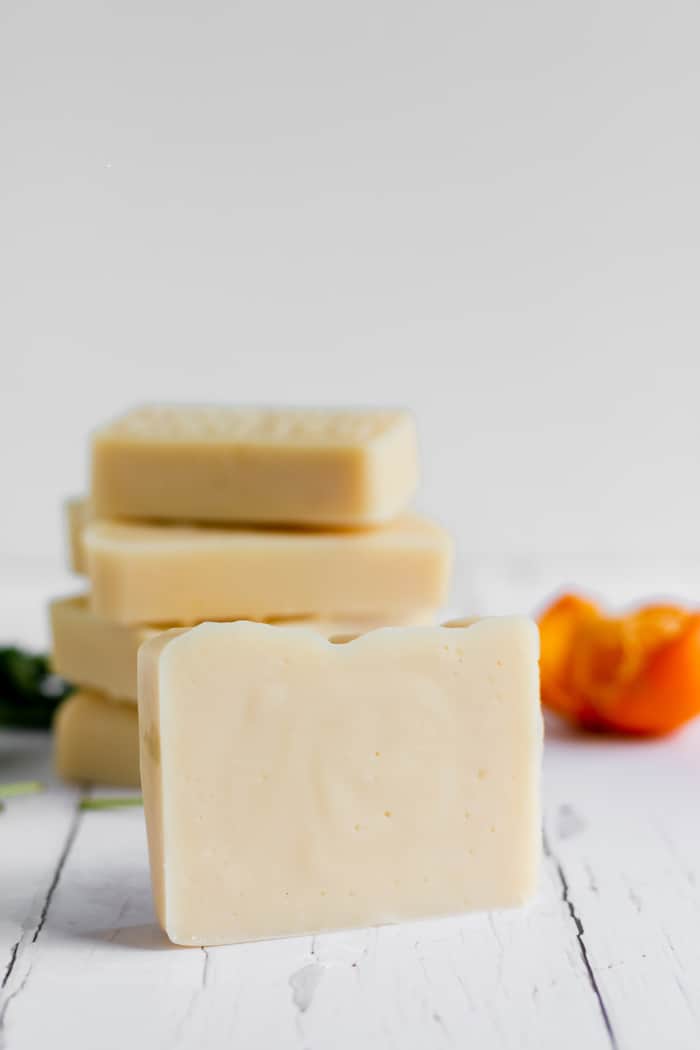
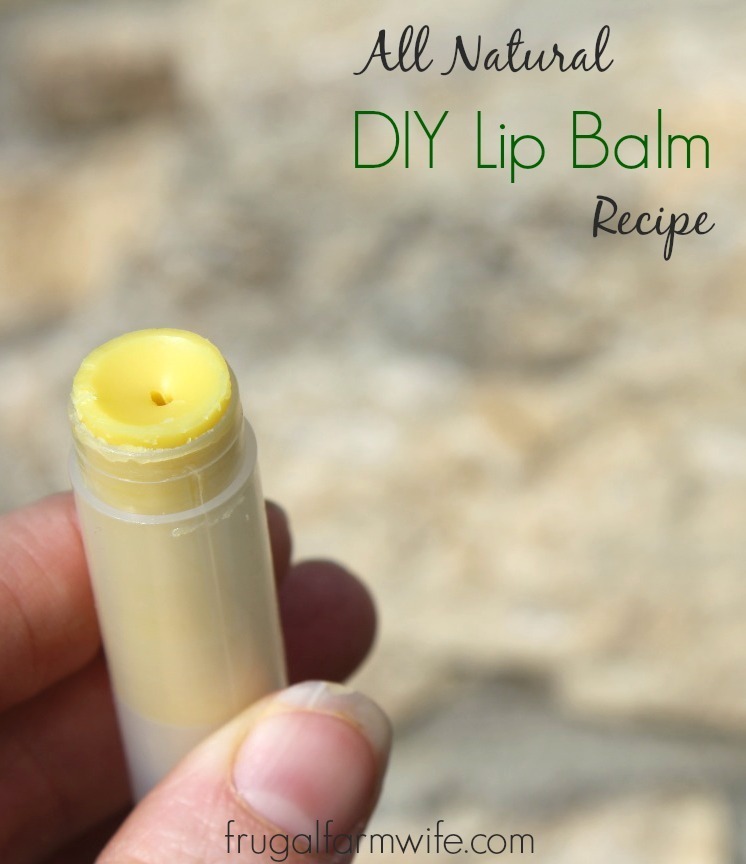

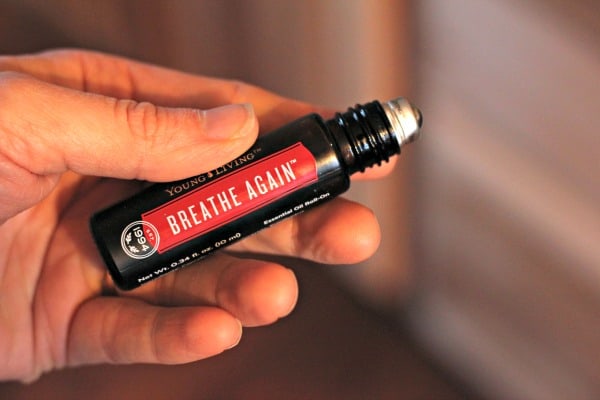

I need to make soap again. I have never made goat’s milk soap, but you have inspired me! 🙂 SO excited to try it!
Hi. This recipe looks wonderful. How many ounces does this make? My molds hold 42 ounces. Thank you
I’m looking for coconut oil goats milk soap. Do you have p e without olive oil
My milk is curdled. It’s not expired . When lye added it discolored and curdled . Is that ok !
can I post it again?